Low-Jitter OscillatorThe problem of Jitter in digital audio conversion can be understood when you think about Fourier synthesis of a square wave. A square wave is made up of an infinite number of harmonics. So, to generate and to transport something even close to a square wave running at 33.8688 MHz, you need to have completely controlled electromagnetic circumstances well up into the multi-Gigahertz region (for true-to-life quality even up to infinity). It may be argued that timing Jitter is born of the very noise inherent in any electromagnetic space, and this includes a complete vacuum just as it includes a brick and mortar wall. Realizing this, the makers of the LessLoss DAC 2004 minimize Jitter by means of synchronously re-clocking the digital signal at crucial stages along the path that this highly sensitive signal must travel. This is necessary because no digital signal is immune to the multiple sources of Jitter, which includes the passage of the signal through the noise inherent in the nature of electromagnetic space. The less Jitter, the better the audio. So we want no Jitter. In order to avoid a jittered signal, a low-jitter Master oscillator is required, which is built into the DAC 2004 and located as close to the actual converting components as possible. Lowest Jitter Clock OscillatorThe digital input section of the LessLoss DAC 2004 contains an extremely low jitter high frequency oscillator running at 33.8688 MHz. The heart of this low jitter clock is the high quality quartz oscillator. The pure and predictable voltage given to drive this component is key to its practically jitterless functioning. We use a very high quality analogue quartz sinus generator which is later turned into a square wave digital signal by means of a super fast comparator chip. In this way we achieve the best possible results.
This is Jitter as it might be depicted in a low budget Hollywood film. Highly oversimplified and very black-on-white, this serves to show visually that Jitter is a distortion of the time domain. The best method of overcoming Jitter is to minimize the distance between the oscillator and the converter chip. Any piece of semi-professional digital audio equipment is capable of running in both MASTER and SLAVE modes.
Perhaps the worst problem with using an external DAC in conjunction with a common household CD player is that the CD player is always the Digital MASTER. Although the LessLoss DAC 2004 outperforms most any DAC even in SLAVE mode, the truly highest performance is obtained while using the DAC 2004 in MASTER mode. Less Loss Leads to Hi-FidelityThere is a clock output from the DAC 2004 which enables the user to slave an external digital source such as a CD player or digital sound card to the DAC (provided the soundcard has a superclock 256F input). In this way, the source digital player, or signal provider, is locked to the ultra-low-jitter clock from the DAC. The converter chip (the PCM 1704) is also locked to the very same clock. Because both source and converter are both locked to the same clock, Jitter is maintained at extremely low levels. In order for a household CD player to function in this way, it must be modified. Only a few commercially available models exist which can run in slave mode. These players are among the most expensive in existence. We provide you with information as to how to do this to an average unit but we will not accept any responsibility for the destiny of your equipment. It's easy [if you can solder]. There will be no further support offered from our part but we believe that there are plenty of experienced enthusiasts worldwide who would take the time to make this simple yet most effective modification. Less Loss Leaves No Leaf UnturnedBecause LessLoss is determined to minimize jitter to the lowest of possible levels, we go the extra step to re-clock (also known as quantizing) the digital data to near-perfect timing just a few millimeters before it enters the audio domain. (This image helps depict graphically what this process does -- green is where the signals should be on the graph paper, and red is where the signals are due to Jitter. The re-clocking slides them back into place.)
|
- Products
- Power Cables
-
 C-MARC™ Prime
The must have foundation for any sound system today.
From
$
486
C-MARC™ Prime
The must have foundation for any sound system today.
From
$
486
-
 C-MARC™ Classic
The unique super-cable power cord everyone's talking about.
From
$
1148
C-MARC™ Classic
The unique super-cable power cord everyone's talking about.
From
$
1148
-
 C-MARC™ Classic Entropic Process
The peerless, advanced Classic masterpiece.
From
$
1934
C-MARC™ Classic Entropic Process
The peerless, advanced Classic masterpiece.
From
$
1934
-
 C-MARC™ Stellar Entropic Process
The crown jewel for highest performance power connection.
From
$
2450
C-MARC™ Stellar Entropic Process
The crown jewel for highest performance power connection.
From
$
2450
-
- Loudspeaker Cables
- Interconnect Cables
-
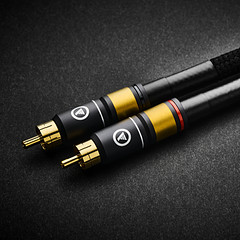 RCA C-MARC™
Cotton-clad true Litz • Whopping 2.3mm2 polarities
From
$
850
RCA C-MARC™
Cotton-clad true Litz • Whopping 2.3mm2 polarities
From
$
850
-
 RCA C-MARC™ Entropic Process
Our finest RCA cable • Polished Wenge barrels
From
$
1428
RCA C-MARC™ Entropic Process
Our finest RCA cable • Polished Wenge barrels
From
$
1428
-
 XLR C-MARC™
A hand-braided cotton-clad unique Litz construction
From
$
950
XLR C-MARC™
A hand-braided cotton-clad unique Litz construction
From
$
950
-
 XLR C-MARC™ Entropic Process
Stratospheric performance for the audio connoisseur
From
$
1615
XLR C-MARC™ Entropic Process
Stratospheric performance for the audio connoisseur
From
$
1615
-
- Digital Cables
-
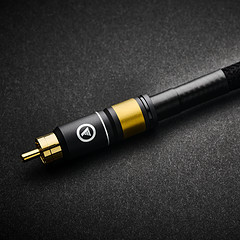 RCA Digital C-MARC™
Cotton-clad unique Litz design • Made only by LessLoss
From
$
510
RCA Digital C-MARC™
Cotton-clad unique Litz design • Made only by LessLoss
From
$
510
-
 RCA Digital C-MARC™ Entropic Process
Possibly the most subtle digital cable on the planet
From
$
858
RCA Digital C-MARC™ Entropic Process
Possibly the most subtle digital cable on the planet
From
$
858
-
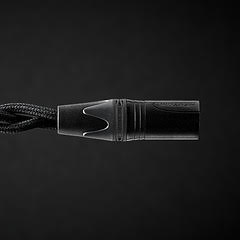 XLR Digital C-MARC™
Featuring a whopping 3 x 2.3mm2 Litz construction
From
$
570
XLR Digital C-MARC™
Featuring a whopping 3 x 2.3mm2 Litz construction
From
$
570
-
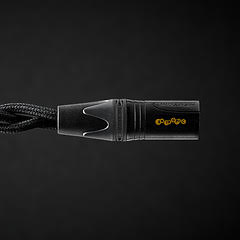 XLR Digital C-MARC™ Entropic Process
Stratospheric performance for the audio connoisseur
From
$
969
XLR Digital C-MARC™ Entropic Process
Stratospheric performance for the audio connoisseur
From
$
969
-
- Grounding Cables
- Bulk Wire and Cable
- Signal Conditioners
-
 Firewall for Loudspeakers
Firewall for Loudspeakers
C-MARC™ Plug-and-Play Speaker signal conditioning like you've never imagined From $ 1656 -
 Firewall for Loudspeakers
Firewall for Loudspeakers
DIY version for Self-Installation For the Do-It-Yourself project enthusiast • Solder yourself From $ 800 -
 BlackGround DIY
Voltage-ground interface for a variety of applications
From
$
446
BlackGround DIY
Voltage-ground interface for a variety of applications
From
$
446
-
 BlackGround 8x/10x Speaker Base
Plug-and-play loudspeaker signal conditioner
From
$
3096
BlackGround 8x/10x Speaker Base
Plug-and-play loudspeaker signal conditioner
From
$
3096
-
- Power Conditioners
-
 Firewall 640x
Plug-and-play solution for any powered gear
Firewall 640x
Plug-and-play solution for any powered gear
C-MARC™ Entropic Process and standard lead versions From $ 654 -
 Firewall 640x DIY for Self-Installation
Self-solder and save!
From
$
320
Firewall 640x DIY for Self-Installation
Self-solder and save!
From
$
320
-
 BlackGround DIY
Voltage-ground interface for a variety of applications
From
$
446
BlackGround DIY
Voltage-ground interface for a variety of applications
From
$
446
-
 BlackGround 6x/10x Power Base
Plug-and-play power conditioner
From
$
2350
BlackGround 6x/10x Power Base
Plug-and-play power conditioner
From
$
2350
-
- Power Distributors
- Equipment Feet
- Field Conditioner
- DACs
- Power Cables
- Reviews
- This is definitely the cable to go for. It will almost literally blow your mind. – March 2012, Puresound Magazine
-
I was intrigued by the unanimously positive reviews garnered by these products ...
– by user Raymond Eye
Leaves you speechless
Sensational cables
BEST purchase I've made
Top notch performance
It's a steal
Musical... liquid... 3D
It's not subtle
More than an upgrade
Best I've heard so far
Stellar service
Sounds like a new system
Much more lifelike
Emotional flow
Overwhelming results
More dimensional
Sound is transformative
We were all astounded
Transformed my listening
Sounds so cohesive
Emotionally engaging
- Where to Start
- Free Newsletter
- Newsletter Archive
- B-Stock Alerts
- Shopping Tools
-
Shipping
- Free Shipping Learn about our international shipping policy
-
Return Options
Our satisfaction guarantee
and return policy -
Customs / Tax
UPS expedites local
customs clearance
-
Transaction
- Conditions of Sale Agreement for a smooth business transaction
- Privacy Policy We pledge to keep your information private
-
Terms of Use
Business policies
and agreements
-
Account
-
- Contact Us
-
Meet the Designers
-
- Care to share of your personal experience with our products? We'd be happy to post it!
- Want to learn more about our activities? Our Newsletter is both free and spam-free.
hi-res photos, brochures
logos, press releases, and
print-friendly PDF downloads. -
Contact Us
Connect with Us
-
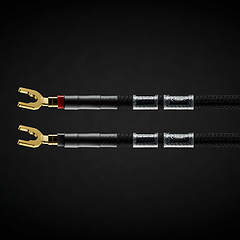


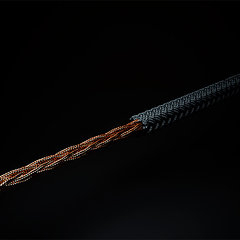








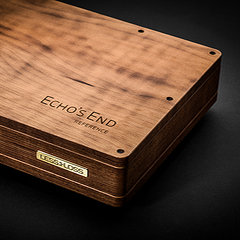

 Beware of Fakes
Beware of Fakes


